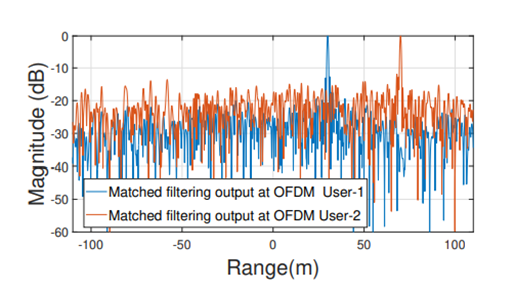Advantages:
- Allows simultaneous sensing and communication without coordination between users
- Uses existing OFDM signals, eliminating the need for extra hardware or bandwidth
- Improves spectral and temporal efficiency, reducing system complexity
- Avoids interference and ghost signals even with multiple users in the same frequency band
Summary:
Modern wireless networks are increasingly adopting joint radar and communication (JRC) systems to manage both data transmission and spatial sensing in shared environments. Traditional approaches require frequency division or time-slot allocation among users to avoid interference. This separation increases spectrum use, system complexity, and power consumption, making it inefficient for dense, real-world deployments like autonomous systems, AR/VR, and smart infrastructure.
This technology introduces a non-cooperative, multi-user ranging method using Orthogonal Frequency-Division Multiplexing (OFDM) signals, already standard in 4G, 5G, and future 6G systems. OFDM's noise-like characteristics and cross-correlation properties allow multiple users to perform simultaneous sensing and communication in the same spectrum without coordination. Through simulations and lab experiments, the system demonstrates accurate, interference-free ranging among users, making it ideal for integrating sensing into next-gen wireless devices like smartphones, vehicles, and headsets.

The image shows how two users perform simultaneous ranging using OFDM signals in the same frequency band. Unlike conventional systems, there are no ghost responses or signal overlap, demonstrating OFDM's ability to enable accurate, interference-free sensing without user coordination.
Desired Partnerships:
- License
- Sponsored Research
- Co-Development